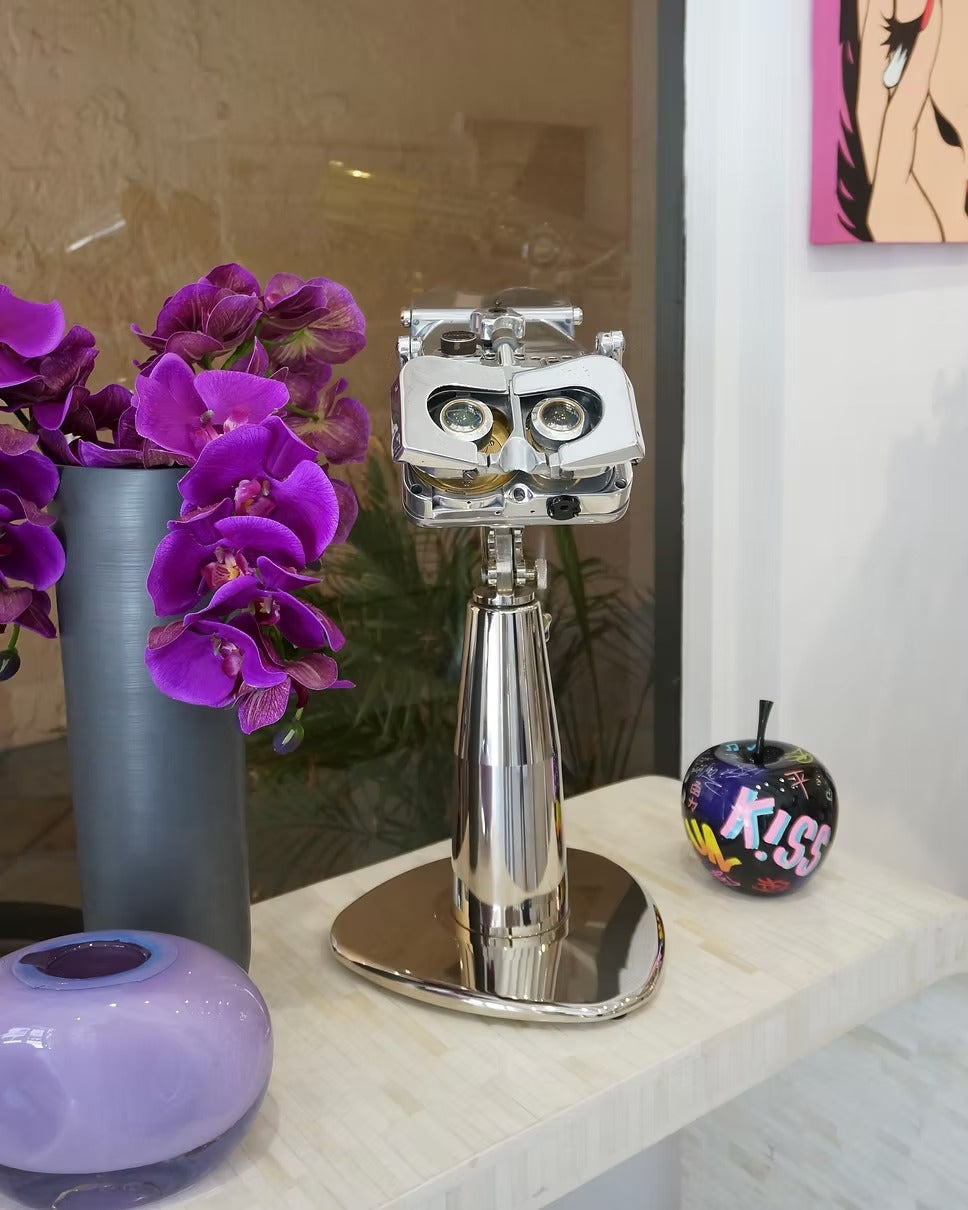
The 10x80 Flak binoculars are large observation binoculars made by Germany during the Second World War. They have a 45 degree angle between the eyepieces and the objective lenses. They were manufactured by 6 different manufacturers and between 150.000 and 200.000 units where made during WWII.
In 1936, the German government wanted large aperture observational binoculars for general purpose. The 10x80 binoculars were meant for air observation in the German armed forces. A number of optical companies answered the call, of which three in particular: Möller, Lietz and Busch. It was Emil Busch that won the contract and he is in fact the one responsible for most of the 10x80 Flak Binoculars produced in Germany. There were 5 other manufacturers: Schneider from Kreuznach (Germany), Leitz from Weztlar (Germany), Goerz from Vienna (Austria), Optical Precision Work from Warsaw (Poland) and Feuss from Berlin (Germany).
All these models have identical optical systems with 80mm cemented achromatic objective lenses with 280mm focal length. The 18mm aperture objectives at the front are clear and allow for good light-gathering and a nice resolution. The eyepieces at the viewer end are quite big. The 5 element Erfle type eypieces boast a 70 degree AFOV and contain 45 degree Schmidt roof prisms. Each pair also had 2 knobs. One is for interocular positioning, which included a scale to set the position. The knob makes the entire optical channel on one side move. The other knob regulates the three neutral density filters (one light, one middle and one dark) introduced in the light path immediately in front of the eyepieces.
The way to differentiate between the different models is by looking at the supplier code on the nameplate carrying the details of the manufacturer. D.F. stands for Doppelfernrohr (double telescope), followed by the type designation 10x80. Below that, you can find the supplier codes: CXN is from Busch, DKL from Schneider, BEH from Leitz, BPD from Goerz, EUG from Optical Precision Work and CRO from Feuss.
The binoculars had a number of typical standard accessories, the first being dew and glare shields that can be twisted onto the front. On top of the binoculars is an accessory rail to mount a brow support, which gives you something to rest your forehead on. The brow support also improves your sight for a better, high-contrast view. The most important accessory however, is the tripod or stand since these binoculars weigh more than 5,5 kilos. The tripod is necessary to enable the binocular to be used for quite precise measurements, both in azimuth and altitude.
These 10x80 Flak binoculars were indeed mostly used for finding enemy aircraft, determine their location and direct anti-aircraft artillery their way. This was made easy thanks to their 45-degree angle. They can also be used horizontally, which proved useful on the battlefield. These 10x80 binoculars were used all over Europe in anti-aircraft defense.










